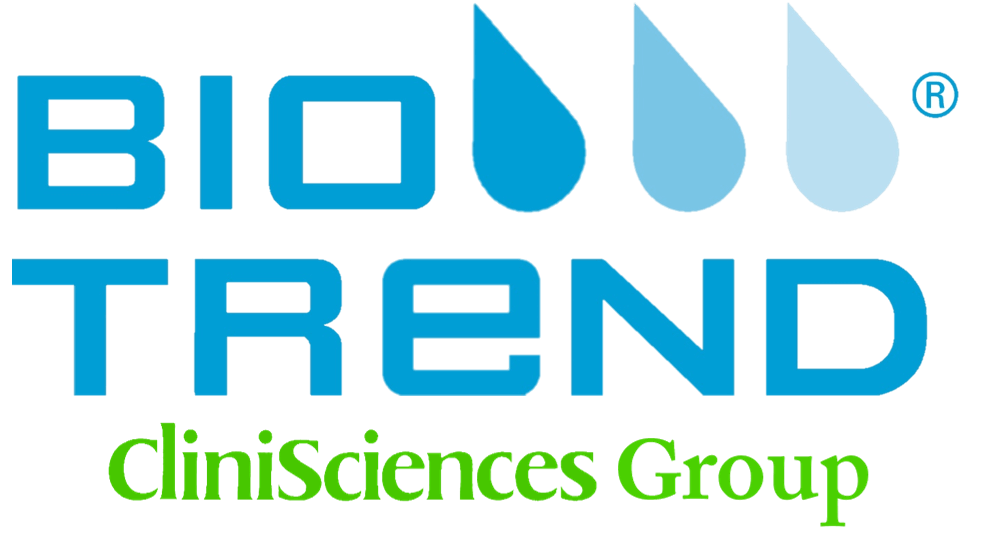Anti-Mouse/Human KLRG-1 - FITC
Cat# K156-100
Size : 100µg
Brand : Leinco Technologies
AntiMouse/Human KLRG1 – FITC
AntiMouse/Human KLRG1 – FITC
Product No.: K156
Clone 2F1 Target KLRG1 Formats AvailableView All Product Type Hybridoma Monoclonal Antibody Alternate Names KLRG1, 2F1, MAFA Isotype Syrian Hamster IgG Applications FC , ICC , IP , WB |
Antibody DetailsProduct DetailsReactive Species Human ⋅ Mouse Host Species Syrian Hamster Immunogen IL2activated NK cells (ALAK cells) from B6 (H2b) mice Product Concentration 0.2 mg/ml Formulation This Fluorescein (FITC) conjugate is formulated in 0.01 M phosphate buffered saline (150 mM NaCl) PBS pH 7.4, 1% BSA and 0.09% sodium azide as a preservative. State of Matter Liquid Storage and Handling This Fluorescein conjugate is stable when stored at 28°C. Do not freeze. For longer term storage, aseptically aliquot in working volumes without diluting and store at 80°C. Avoid Repeated Freeze Thaw Cycles. Regulatory Status Research Use Only Country of Origin USA Shipping 2 – 8° C Wet Ice Excitation Laser Blue Laser (488 nm) Additional Applications Reported In Literature ? FC, WB, IP, ICC Each investigator should determine their own optimal working dilution for specific applications. See directions on lot specific datasheets, as information may periodically change. DescriptionDescriptionSpecificity 2F1 activity is directed against mouse and human KLRG1. Background Killer cell lectinlike receptor G1 (KLRG1) is a transmembrane glycoprotein with an extracellular Ctype lectinlike domain and a cytoplasmic immunoreceptor tyrosinebased inhibitory motif (ITIM)1. KLRG1 plays an inhibitory role in human NK and T cells2 and is frequently used as a marker of cellular differentiation, with memory cells and highly differentiated endstage cells having a significantly higher percentage of expression than differentiating cells2. Additionally, the proportion of CD8+ T cells expressing KLRG1 is agerelated, increasing from ~ 40% of the CD8+ T cell pool in young adults to 90% in individuals over 65. KLRG1 is known to bind E, N, and Rcadherin1, 2. Cadherin interactions are generally involved in celltocell adhesion and additionally, KLRG1/Ecadherin interactions are involved in immune control2. 2F1 was generated by immunizing Syrian hamsters with IL2 activated NK (ALAK) cells from B6 (H2b) mice3. Popliteal lymph node cells were fused to murine myeloma P3X63Ag.8.653 cells and hybridomas screened for antibodies specific to ALAK cells. Antibody 2F1 was used to show that KLRG1 is indirectly upregulated by expression of MHC class I molecules in an interaction affected by class Ispecific Ly49 inhibitory receptors and was also used to show that KLRG1 expression is modulated by SHP1 3 . Additionally, 2F1 was used to identify the KLRG1 mouse homolog and show that it is not expressed on mouse mast cells 4. Antigen Distribution KLRG1 is expressed by subsets of natural killer cells and a small fraction of T cells but not by other lymphohematopoietic cells in both mouse and human. Ligand/Receptor E, N, R cadherins NCBI Gene Bank ID UniProt.org Research Area Biomarker . Cancer . Immunology References & Citations1. Borys SM, Bag AK, Brossay L, et al. Front Immunol. 13:894508. 2022. 2. Henson SM, Akbar AN. Age (Dordr). 31(4):285291. 2009. 3. Corral L, Hanke T, Vance RE, et al. Eur J Immunol. 30(3):920930. 2000. 4. Hanke T, Corral L, Vance RE, et al. Eur J Immunol. 28(12):44094417. 1998. 5. Robbins SH, Nguyen KB, Takahashi N, et al. J Immunol. 168(6):25852589. 2002. 6. Kieckbusch J, Gaynor LM, Moffett A, et al. Nat Commun. 5:3359. 2014. 7. Tiemessen MM, Baert MR, Kok L, et al. J Immunol. 193(11):54805487. 2014. 8. Menendez CM, Jinkins JK, Carr DJ. J Immunol. 197(4):12621275. 2016. 9. Graham JB, Swarts JL, Lund JM. Curr Protoc Mouse Biol. 7(4):221235. 2017. 10. Li Q, Li D, Zhang X, et al. Immunity. 48(2):258270.e5. 2018. 11. Yasuda K, Kitagawa Y, Kawakami R, et al. Nat Commun. 10(1):549. 2019. 12. Garg G, Muschaweckh A, Moreno H, et al. Cell Rep. 26(7):18541868.e5. 2019. 13. Li A, Herbst RH, Canner D, et al. Cell Rep. 29(10):29983008.e8. 2019. 14. Sidwell T, Liao Y, Garnham AL, et al. Nat Commun. 11(1):252. 2020. 15. Vasanthakumar A, Chisanga D, Blume J, et al. Nature. 579(7800):581585. 2020. 16. Huang RY, Francois A, McGray AR, et al. Oncoimmunology. 6(1):e1249561. 2016. 17. Zhao M, Shao F, Yu D, et al. Nat Commun. 13(1):7600. 2022. |



